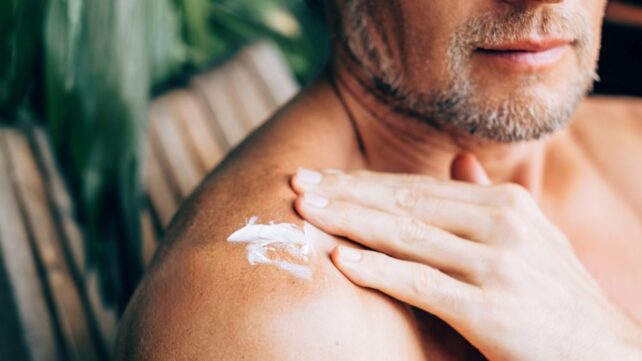A breakthrough in insulin delivery could one day spell an end to the invasive needles on which many people with diabetes rely.
Using mice, minipigs, and lab-grown human skin samples, scientists have demonstrated a topical insulin treatment – an achievement long assumed impossible due to the large size of insulin molecules and their strong attraction to water, which prevents them from slipping through the skin's oily outer layers.
"The skin-permeable polymer may enable non-invasive transdermal delivery of insulin," writes a team led by scientists at Zhejiang University in China, "relieving patients with diabetes from subcutaneous injections and potentially facilitating patient-friendly use of other protein- and peptide-based therapeutics through transdermal delivery."
Related: A Common Diabetes Drug Is Linked to 'Exceptional Longevity' in Women

The delivery of drugs through the skin has many benefits. It's easy to do at home, is pain-free, and ensures a controlled, gentle release into the body. However, skin is, by design, a barrier that helps protect your body from harmful substances. Its outer barrier, the stratum corneum, consists of multiple layers of dead skin cells glued together by fats and oils, or lipids.
Topical drugs work around the skin's defenses; they have small molecules that slip through the skin easily, as well as an ability to interact with the lipids they encounter.
Insulin – the hormone that regulates glucose levels – has neither of these properties. The molecules are on the larger side and have a water-loving (hydrophilic) exterior, which makes them chemically incompatible with the skin's oils. Rather than sliding past or through the oils, they bounce off.
This sounds impenetrable, but the researchers thought another property of skin may help insulin enter: its acidity. Skin naturally has a pH gradient, starting slightly acidic at the surface and rising towards pH neutrality in deeper layers.
The researchers set to work engineering a delivery system that would interact with this gradient to admit the insulin as a plus-one to the exclusive body club.
The result is based on a polymer called poly[2-(N-oxide-N,N-dimethylamino)ethyl methacrylate], or OP, the properties of which change with shifting pH levels, shown to be biocompatible in earlier tests.
On the surface of the skin, OP has a positive charge, which allows it to stick to skin lipids. However, at neutral pH, it loses that charge and lets go of the lipids, by which point it has slipped through the skin barrier and into the body.
Binding insulin to the OP polymer as a conjugate called OP-1 allows the all-important hormone treatment to hitchhike through.
Sounds good in theory, right? Well, it sounds even better in practice. In human skin models and diabetic mice, OP-I was more effective at carrying insulin past the skin than insulin alone or insulin combined with a different polymer, PEG, as a control. PEG is widely used across a range of pharmaceutical applications.
In the mice, the treatment brought blood glucose concentrations to normal levels within an hour with an efficacy on par with insulin injections. The levels then remained stable for 12 hours.
The next step was diabetic minipigs, which are biologically more similar to humans than mice are. The effects were comparable. The pigs' blood glucose levels dropped to normal within two hours and also remained stable for 12 hours.
Once it gets inside the body, OP–I accumulates in key glucose-regulating tissues, including the liver, fat, and skeletal muscles, where cells take up the conjugate and release the insulin inside. OP-I activates insulin receptors and enhances glucose uptake and metabolism, just like injected insulin does.
Perhaps most importantly, it does so in a more sustained manner than injected insulin, resulting in a smoother, more prolonged effect.
The researchers found no signs of inflammation, suggesting that the treatment may confer minimal, if any, harmful side effects – although we'd have to wait for stronger human testing to be sure.
Nevertheless, the results could mean that frequent insulin injections may one day be a thing of the past. And the system may even work with other drugs.
"The OP conjugation," the researchers write, "is versatile for transdermal delivery of biomacromolecules such as peptides, proteins and nucleic acids, with broad therapeutic applications, warranting further investigation in future studies."
The research has been published in Nature.

